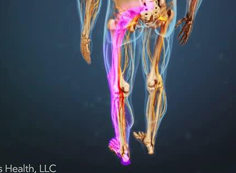
What You Need to Know About Sciatica
The term sciatica describes the symptoms of leg pain—and possibly tingling, numbness, or weakness—that originate in the lower back and travel through the buttock and down the large sciatic nerve in the back of each leg.

Sciatica (pronounced sigh-at-eh-kah) is not a medical diagnosis in and of itself—it is a symptom of an underlying medical condition. Common lower back problems that can cause sciatica symptoms include a lumbar herniated disc, degenerative disc disease, spondylolisthesis, or spinal stenosis.
Sciatica Nerve Pain
Sciatica is often characterized by one or more of the following symptoms:
Constant pain in only one side of the buttock or leg (rarely in both legs)
Pain that is worse when sitting
Leg pain that is often described as burning, tingling, or searing (versus a dull ache)
Weakness, numbness, or difficulty moving the leg, foot, and/or toes
A sharp pain that may make it difficult to stand up or walk
Pain that radiates down the leg and possibly into the foot and toes (it rarely occurs only in the foot)
Sciatic pain can vary from infrequent and irritating to constant and incapacitating. Symptoms are usually based on the location of the pinched nerve.
While symptoms can be painful and potentially debilitating, it is rare that permanent sciatic nerve damage (tissue damage) will result, and spinal cord involvement is possible but rare.